Hybrid tea roses: characteristics of varieties
Content
How to plant
Hybrid tea roses, the varieties of which can be very different in appearance, are very similar in their needs. A description of one rose will not give an idea about all representatives of this species - they can be short (a lot of bushes grow from 60 to 90 cm) or tall (some representatives grow over one and a half meters), the bush can have a pyramidal shape or be wide and spreading.  Leaves of different shades of green consist of 5 - 7 fragments, one flower at a time is formed on the peduncles, but there is also a small inflorescence. The buds are pointed, the blossoming flowers are usually large (from eight to fifteen centimeters in diameter), double, the petals are from 20 to 150. Shades of aromas and colors can be described for a very long time and with pleasure.
Leaves of different shades of green consist of 5 - 7 fragments, one flower at a time is formed on the peduncles, but there is also a small inflorescence. The buds are pointed, the blossoming flowers are usually large (from eight to fifteen centimeters in diameter), double, the petals are from 20 to 150. Shades of aromas and colors can be described for a very long time and with pleasure.
Hybrid rose absorbs the qualities of mother plants, modern varieties can boast not only external beauty, but even greater resistance to diseases and cold.
But still, all this variety of varieties prefers light nutritious soil, preferably slightly acidic.
Roses are planted at a distance of 50 cm from each other, deepening the grafting point 2 - 3 cm underground. But first you need to choose a good seedling. If possible, it is advisable to carefully examine the entire plant. The roots should be intact, with no signs of rot or dryness. A well-developed root system is the key to a strong and healthy future bush. The shoots should have at least a couple of healthy, fully formed buds, and there should be no signs of rot, parasite infestation.
Before planting, it is very useful to soak the seedling in water, if not entirely, then so that the root collar becomes wet. Before planting, many experts advise dipping the roots in a clay-dung chatter, this is especially useful if the land on the site is poor, and fertilizers have been added to the planting pit, then the clay will stick to the roots and protect them from possible contact with chemicals.
It is worth digging a hole slightly larger than the volume of the root system itself, loosen the earth at its bottom, pour earth mixed with humus or compost on the bottom with a slide. Put the straightened roots on this mound, cover them with the remaining earth, tamp it around the shoots, water it abundantly, mulch with peat or humus, you can simply spud it with earth to a height of 15 cm.
Video "Description"
From the video you will learn a lot of new and interesting things about this type of bushes.
Growing
A young seedling needs to be looked after carefully and carefully, if it was not bought in a nearby nursery, then it is possible that it grew in a greenhouse.First, it must be cut off, leaving 2 - 3 healthy buds on the shoots, then create a light shade for it and gradually accustom it to the sun's rays.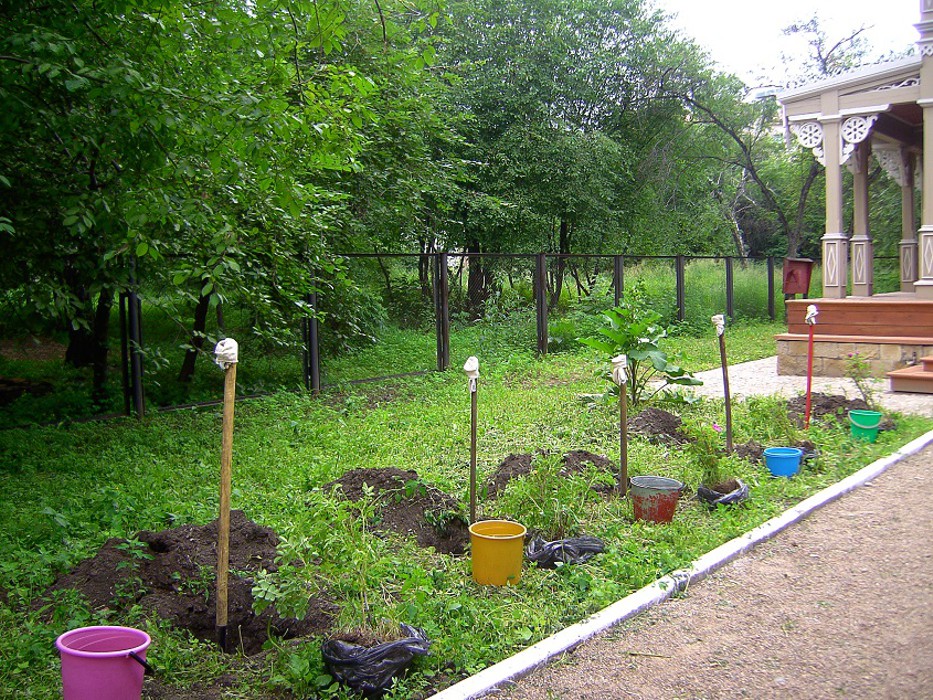 Throughout the growing season, the rose will need to be watered, fed, loosened and mulched around the soil, free from weeds, and protected from parasites. But all these efforts will be rewarded - a charming fragrant rose will delight you with the first flowering of the year from the second half of June.
Throughout the growing season, the rose will need to be watered, fed, loosened and mulched around the soil, free from weeds, and protected from parasites. But all these efforts will be rewarded - a charming fragrant rose will delight you with the first flowering of the year from the second half of June.
After a month of continuous flowering, there is a break - in some varieties up to two weeks, in others - up to a month. Then flowering resumes and continues almost until the very frost. Often, at the end of October, you have to cut the buds that have not yet bloomed. Some modern varieties bloom all summer without interruption.
Such a busy flowering schedule requires a lot of energy, so, probably, roses need to be fed several times per season. The first two times (in spring), the plant is given a lot of nitrogen fertilizers. These can be complexes of mineral fertilizers with a predominance of nitrogen fertilizers or simply a solution of slurry (or poultry droppings). After the first abundant flowering, the flowers are necessarily fertilized, but part of the nitrogen is significantly reduced, and other elements should prevail: phosphorus, potassium, magnesium. Closer to autumn, nitrogen is completely excluded, potassium-phosphorus fertilizing is introduced, which will help the plant accumulate strength for the winter. It is advisable to apply top dressing after watering.
The hybrid rose is propagated by grafts, but some varieties can be diluted with cuttings. In the fall, during pruning, you need to prepare suitable shoots, save them in one of the well-known ways until spring, and then root them. Own-rooted roses usually have very good characteristics, they adapt more easily to weather and climatic conditions, but their root system remains superficial. With care, especially with the watering regime, they can be made to grow a little more downward, and not in breadth, but they will never equal the strength and depth of growth of the roots of the rose hips. Therefore, probably, experts prefer to vaccinate them.
Care and watering
Roses love moisture, its lack will surely affect the strength of the scent, the size of the buds, and their quantity. Do not allow the earthen coma to dry out. But excess moisture can be even worse - if the soil is too clayey, and drainage is not organized, then stagnation of water near the roots can lead to their decay. Therefore, watering is best done plentiful, but not frequent. Young plants are watered every week, especially in hot summer, room temperature water, standing in the sun, needs to be poured under the shoots, it is not desirable for it to fall on branches, leaves and buds. After watering, which is usually done early in the morning or in the evening, the next day, the ground around the bush is loosened, then mulched with humus or peat, you can even just hay or cut grass. Mulch will protect moisture from evaporation, soil from weathering, and roots from overheating.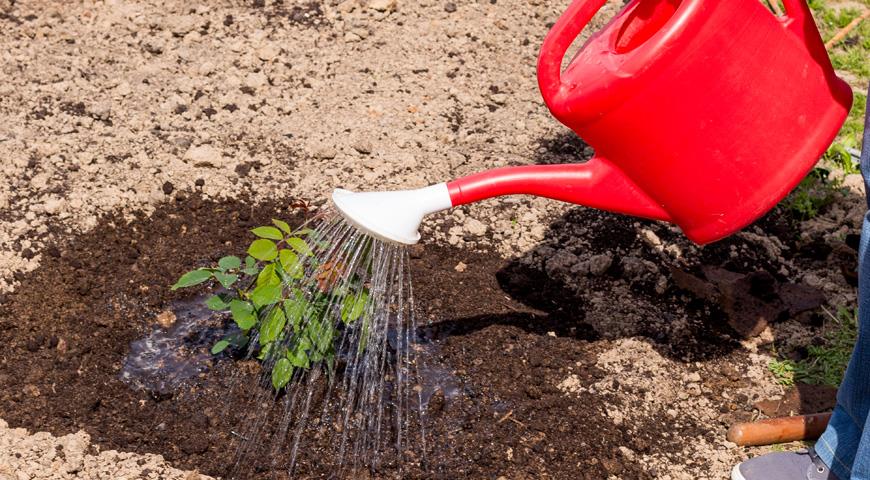
For adult plants, it will be enough to get from one and a half to two buckets of water every two to three weeks, especially if the summer is not too hot. Coolness and excessive humidity will create bad conditions for roses, but good for pathogens of fungal diseases. In such weather (frequent cool rains), it is worth dusting the bushes with crushed wood ash.
Pruning hybrid tea roses is a very important point in caring for them. The first time a rose is cut in the first spring after planting. In subsequent springs, they are no longer pruned so much, but still it is worth leaving no more than five healthy buds on the shoot. Peduncles are formed on the shoots of the first year, so all pruning in spring and summer is aimed at stimulating their growth. In summer, damaged shoots and blind, that is, not blooming, are removed. In autumn, in the second half of October, if frosts have not yet arrived, unripe shoots, buds, leaves are cut off.It is imperative to cut out completely wild growth, which can form in most varieties (almost all). All cut greens must be collected and burned so as not to leave any chance for diseases and pests.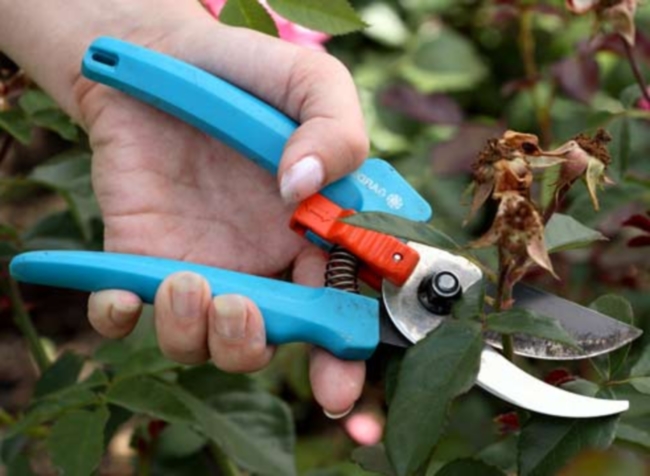
Roses can suffer even when the temperature drops to -10 degrees. Therefore, you need to cut off, remove plant debris, wrap them up for the winter before the onset of such low temperatures. In order for the rose to prepare better for winter, experts recommend leaving a few flowers until the fruits ripen, then the plant makes a full annual cycle and is going to go to a dormant period. The bushes prepared for winter are spud with earth mixed with sand, to a height of at least 25 cm, covered with spruce branches. Above them, they make a frame of metal wire (or put a wooden box with slots), cover the entire structure with lutrasil, the edges of which must be well pressed to the ground with stones or boards so that the wind does not damage our sissy's winter house. If necessary (during thaws) lutrasil can be raised for ventilation. And if it snows all winter, then the rose will definitely winter well.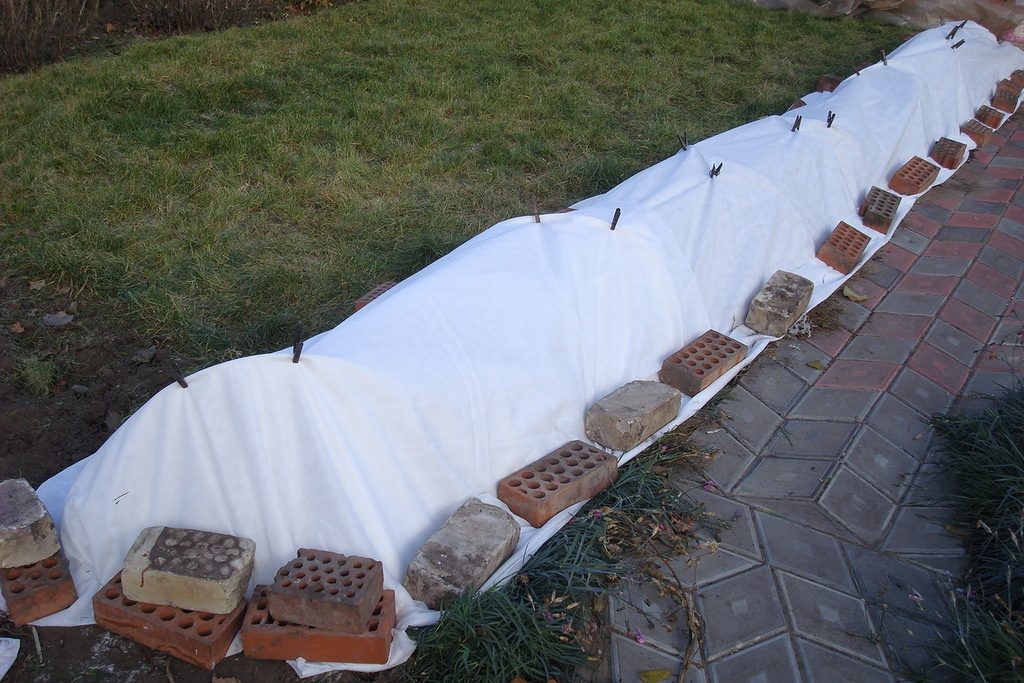
The longer the main root, the more developed the root system, the less the whole plant suffers from frost. Even if the shoots freeze, new ones will grow from the root. Therefore, in the first years, while the rose is still young, you need to cover it very carefully, make sure that the grafting site is underground, adult bushes will already tolerate frosts more easily.
Popular varieties
Among all the splendor of this type of roses, there are varieties that have been known to everyone for a long time, are often found, but do not become less beloved because of that. Among them is the exquisite Gloria Day. The bush does not like radical pruning, it grows up to two meters high. On its strong, powerful shoots, elegant dark green leaves and single luxurious flowers of a yellow-lemon color with a pink edge of the petals grow. Pointed (traditionally) bud opens with a large, up to 15 cm in diameter, double flower, consisting of 45 delicate petals of stunning color. In order for a new bud to form as soon as possible, the fading flower must be cut off with a part of the stem. This variety cannot boast of a strong aroma, and it begins to bloom later than others, but the hearts of many flower growers belong to it.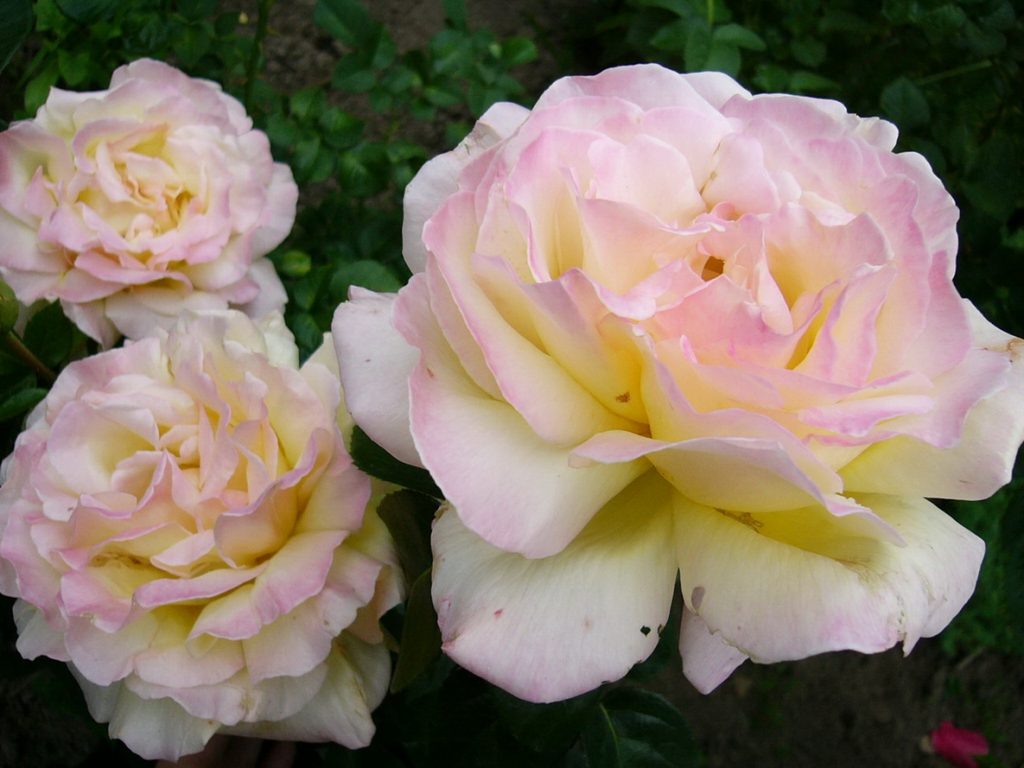
Another charming flower went even further in its coloration. The Double Delight variety is known for its pleasant strong aroma and two-tone color - its double flowers with a creamy center have a red border, the width and intensity of the color of which depends on the amount of ultraviolet rays received during flowering. A bush up to 90 cm tall with dark green glossy leaves is usually covered with a large number of flowers of different colors - after all, one got more sun, the other less. In greenhouse cultivation behind glass, all flowers have a pleasant cream color with no signs of red.
Another variety is known for changing the color of the flower - "Paradise". The silvery-lavender bud, with the reddish edge of the petals opening, becomes bright crimson, and the middle remains lavender.
Large double flowers of the "Nicole" variety please the eye with the dark red upper part of the petals, the lower part of which is almost white with slightly pinkish edges.
The Blue Moon variety is very popular, whose large double flowers are more lilac than blue.
Our summer residents love the Red Velvet variety. Its tall, up to two meters, bushes with dark green glossy foliage are decorated with magnificent large double dark red flowers.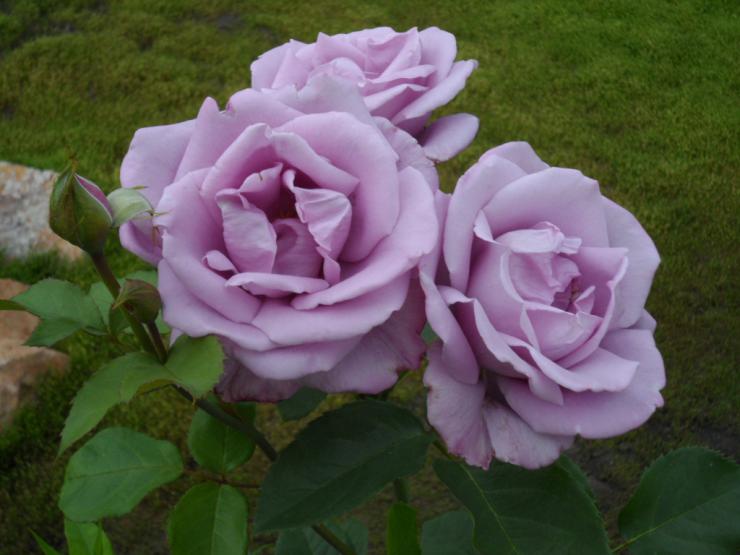
Long and profusely flowering variety "Dallas" is distinguished by large double flowers on long peduncles. Their color is crimson-red, and their rounded petals look like they were being folded as compactly as possible. Even when the middle is visible, it still seems that the flower has not yet fully opened.
Among white roses, the Virginia variety is especially popular, its medium-sized cone-shaped bud has only 31 petals, and the blossoming flower looks like it was cut out of precious paper. The stem is covered with small thorns, and the foliage is dark green and very dense.
The pink flowers of the Eiffel Tower variety are long and sharp, and the leaves are light green, matte. The bush looks very decorative, it is also resistant to fungal diseases.
The creamy Bella Pearl flower with pinkish stains looks very delicate. The thorny bush grows up to a meter, flowers with a diameter of 9 cm cover it abundantly, after a short break, the flowering is repeated.
Video "The best varieties"
From the video you will learn about the best varieties of this type of roses.



